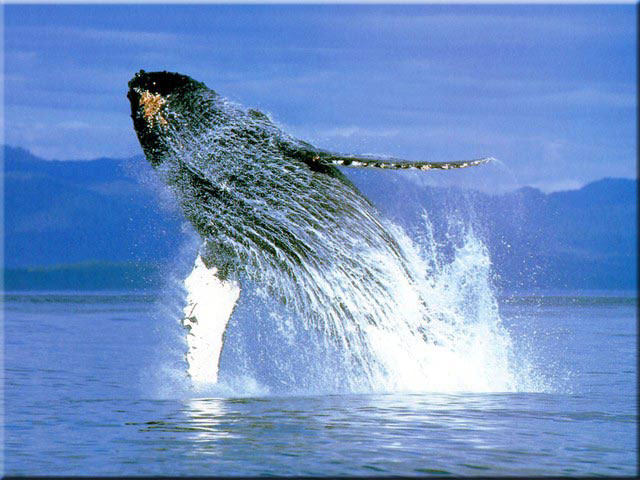
When whales burst from the sea with joyful exaltation they humble us with their awesome power. Making the longest migrations of any mammal on earth, from Alaska’s chilly waters to Baja, California’s warmth, they rely on ancient knowledge to guide them.
Today their challenges are greater than ever from congested, noisy shipping lanes, to pollutants and plastic in our oceans. The creation of the Whale Trail with over sixty designated viewing sites on the Pacific Coast from British Columbia to California is an attempt to bring greater sensitivity to the survival needs of the largest and oldest creatures on our planet.
Six viewing sites have been identified on the Central Coast of California: San Simeon, Moonstone Beach in Cambria, the pier at Cayucos, the bluff trail in Montana de Oro State Park, the Avila Pier, and at the Oceano Dunes Overlook at Grand Avenue. At each site are placards displaying marine mammals people should expect to see from that vantage point and signs to help spot them. Whales are just a part of the marine life that needs our protection.
Shorebirds circling indicate a shoal of fish that will soon bring seals, sea lions, and other sea creatures to the surface. Spouts, or blows of whales exhaling above the water’s surface, often look like puffs of smoke. The shape and size of the blow is distinctive to each species. Gray whales coming through December to April have a double blow-hole with a heart-shaped spout. Humpbacks that can be seen all year long have tall, column-shaped blows. All cetaceans have identifying dorsal fins. Find more information on how to spot and identify marine mammals on WhaleTrail.org.
I visited the Piedras Lighthouse in San Simeon that sits on a lonely peninsula where rough seas crash over sea stacks. Docents lead tours through the manicured grounds garnered good viewing spots for a variety of marine life, including the whales during migrations. A fluffy otter was floating on his back oblivious to crashing waves while elephant seals lay sprawled on the shore.
The pier in San Simeon Bay on the Whale Trail is the home of the Coastal Discovery Center. Docents love to take kids to the end of the pier where they drop a line in the water to collect a sample then place it under a microscope for the kids to marvel at the squiggling life forms in a single drop. This is an effort is to encourage stewardship of our precious oceans and the creatures who live in them. Locals want to show off their gorgeous region, and they enjoy sharing the trails and their knowledge of flora and fauna at no charge, but they are encouraging stewardship travel. You can pick up a Stewardship Traveler Clean-Up Kit and appreciation tote bags at the Avila Beach, Cayucos, and Cambria Visitor Centers.
My favorite stop on the Whale Trail is the pier at Cayucos. It is a fun walk to tide pools as well as an opportunity to see migrating whales and playful sea otters, and it is home to Schooners Restaurant. Savoring an Oysters Rockefeller starter followed by saucy seafood pasta paired with a crisp chardonnay and a front row seat for the sunset is the perfect end to a day exploring the Whale Trail on the Central Coast.
Highway 1 Discovery Route: http://highway1discoveryroute.com/
Whale Trail: https://thewhaletrail.org/
About the Author:
Adventure-travel writer, Linda Ballou, has a host of travel articles on her site, along with information about her travel memoir, Lost Angel Walkabout-One Traveler’s Tales, her historical novel Wai-nani, A Voice from Old Hawai’i and her latest action-adventure novel The Cowgirl Jumped over the Moon at-www.LindaBallouAuthor.com. Subscribe to her blog www.LindaBallouTalkingtoyou.com and receive updates on her books, and travel destinations.







Thanks for your re-post.
Annie Coburn
Fab Senior Travel